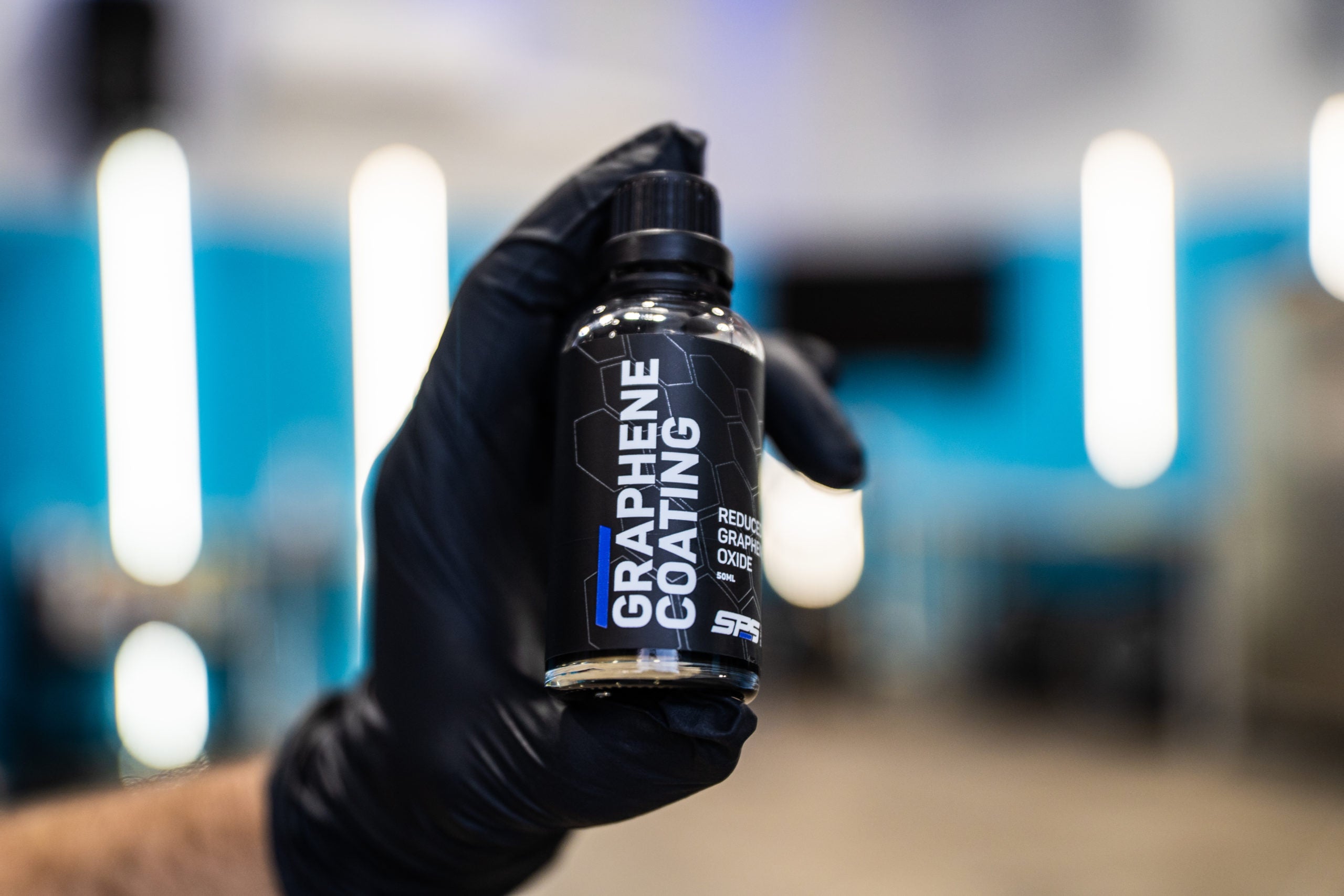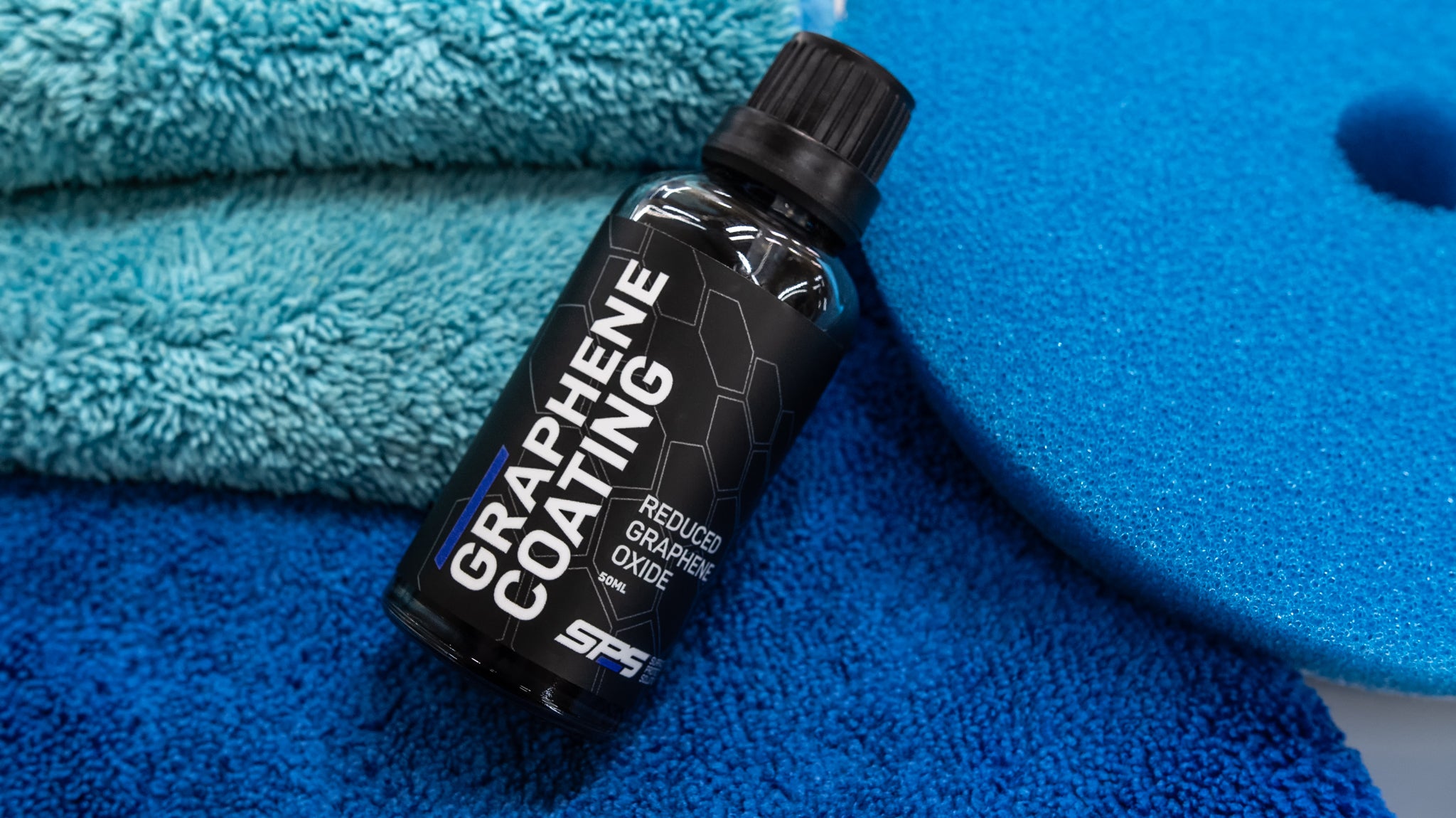TABLE OF CONTENTS
- What Do Graphene And Ceramic Coatings Do?
- Are Ceramic Or Graphene Coatings Worth It?
- How Much Do Graphene Or Ceramic Coatings Cost?
- Which Is More Durable, Ceramic or Graphene Coatings?
- Which Is Easier To Maintain?
- Summary & TLDR
Anyone who’s ever ventured into the world of car care in the last 10 years has likely heard of ceramic coatings and how they revolutionized the car care industry, creating as much buzz as speculation about their long-term benefits. Flash forward to today, and nearly everyone in the industry is trying to capitalize on the benefits and buzz of this proven protection technology.
Ceramic dominated much of the 2010s and earned rapport among detailing professionals and DIY enthusiasts alike.
Fast forward to today, Graphene coatings have entered the chat. Manufacturers are throwing down some bold claims about Graphene being able to protect vehicles better than ceramic coatings, and the industry is divided on which side to take.
Now the industry is faced with a new question: Which is better? Graphene or Ceramic Coatings? As a company that has produced both, here’s where we weigh in on the debate.
WHAT DO GRAPHENE AND CERAMIC COATINGS DO?
Both coatings are an ultra-thin layer that bonds directly with the surface layer (aka the clear coat) to fill in the microscopic pits and grooves on the surface, creating a new ultra-strong, ultra-smooth layer to face the elements. The new layer is hydrophobic, extremely glossy, resilient to small scratches, and UV rays.
What are Ceramic Coatings?
Ceramic coating’s main component is silicon dioxide, which is the main proponent behind the ultra-glossy, hydrophobic aesthetic offered by these coatings. The ingredient is far superior to waxes and polymers because it doesn’t degrade nearly as quickly, offering a more permanent solution for car enthusiasts.
What are Graphene Coatings?
Graphene coatings are built on a similar foundation as ceramic coatings but take it a step further by introducing Graphene into the mix.
The carbon atoms in the Graphene structure in its highest form create a honeycomb structure that’s stronger than Kevlar, but still flexible, extremely heat resistant, and many other things.
When used within a carrier solution such as a PDMS coating like SPS Graphene, this next-generation technology adds flexibility to the coating, disperses heat better, and boasts a high water contact angle (meaning water really doesn’t like to stick to it).
The result is a stronger, multi-benefit coating that’s also easier to apply.
Now, beware of the gimmicks out there. Not every Graphene coating is what it’s chalked up to be. It’s important to look at the SDS sheets and make sure you’re not just buying a ceramic coating with some Graphene powder added.
At SPS, our coating has been developed in-house at our lab in the USA. We have the highest levels of Graphene dispersion in a coating available on the market right now. This isn’t some off-the-shelf coating you’re going to find at a big-box retailer, it’s the real deal and offers up to five years of protection from its incredible surface bond.

Unlike ceramic coatings, Graphene coatings can be applied to just about any surface: exteriors, interiors, matte finishes, windows, and wheels. If you think you can coat it, you probably can!
Motorcycles, boats, mountain bikes, snowmobiles, dirt bikes, ATVs, Side by Sides, you name it – the list goes on and on.
If it’s got tracks, tires, or it floats, you should probably coat it with SPS Graphene to keep it protected.
Here’s are some of the ways Graphene Coatings beat Ceramic Coatings:
- They have a higher water contact angle. Put simply, water beads off even easier.
- They’re highly flexible, and less prone to micro-cracking on the surface of panels during expansion and contraction due to temperature fluctuations.
- Graphene is more chemical resistant and as a result, they last longer than most ceramic coatings and require less maintenance.
- They’re much less prone to water spotting.
- They reduce heat absorption and block UV rays, meaning your possessions are less likely to be damaged by the sun.
ARE CERAMIC AND GRAPHENE COATINGS WORTH IT?
Ceramic and graphene coatings work really well. The compounds found in these coatings provide vastly superior protection to all waxes and common sealants.
That’s why more and more off-the-shelf products (including longtime department store protection brands that have been selling waxes for generations) are coming to the market with their own variations of coatings and detailer products preaching the benefits of these substances.
The main issue with the big box brands is that no one really knows how much ceramic or graphene is actually being included in the bottles of their product.
HOW MUCH DO GRAPHENE OR CERAMIC COATINGS COST?
Coatings can vary in cost from $20 to $2,000, depending on how much protection you’re looking for. A bottle of Graphene Detailer retails for $19.95 USD and provides up to 6 months of benefits. It’s a great way to get a taste of what the full coating can offer.
A full coating, on the other hand, that’s installed by professionals can run you up to $2,000 (depending on the condition of your vehicle and the amount of prep needed) but lasts around 5 years. The full SPS Graphene coating provides the best results for protection, aesthetic properties, and ease of maintenance. If you’re wondering how much it costs, we can get you a quote!
So, which is more expensive: Ceramic or Graphene? Graphene tends to cost a bit more than ceramic but lasts longer and is much easier to apply. The cost of Graphene is much greater than a SiO2 coating but the benefits far outweigh the cost.
Ceramic coatings have an average lifespan of 2-3 years (except for some longer-term ceramics), whereas our Graphene coatings can last an average of 5 years.
WHICH IS MORE DURABLE, CERAMIC OR GRAPHENE COATINGS?
Graphene Coatings are highly flexible and therefore less susceptible to the micro-cracking that can sometimes plague ceramic coatings. The scratch resistance you can achieve from Graphene Coatings is superior to ceramic as well.
Side Note: Watch out for some of the “Self-Heal” coatings that are out there on the market. Yes, they have the ability to ‘self-heal’ but they are softer coatings that actually fail to protect the vehicle as well as harder coatings. We’ve been working on the development of ones for years and it is tricky to strike a balance!
WHICH IS EASIER TO MAINTAIN?
Thanks to the low friction of both coatings, things like dust, dirt, and other debris tend not to stick to the surface, resulting in the need for fewer washes. It’s best to avoid automatic car washes (the ones with spray-on waxes) and instead bring out the buckets for a good ol’ fashioned hand wash.
Maintaining a Graphene Coating is quite easy, and we like to recommend that less is more. When you start to notice building on the surface is when it’s time to do a simple wash with a mild detergent to remove build-up from road contaminants. You can use our Graphene Detailer to top up the coating and help maintain the benefits.
Coating manufacturers recommend washing every two weeks. Depending on who installed the coating, there can also be requirements to take it back to the detail shop that installed the coating for maintenance washes and top-ups.
Check out our comprehensive Guide to Maintaining your Graphene Coating once it’s been installed.
Unlike some of the competitors, SPS doesn’t require any annual inspections.




